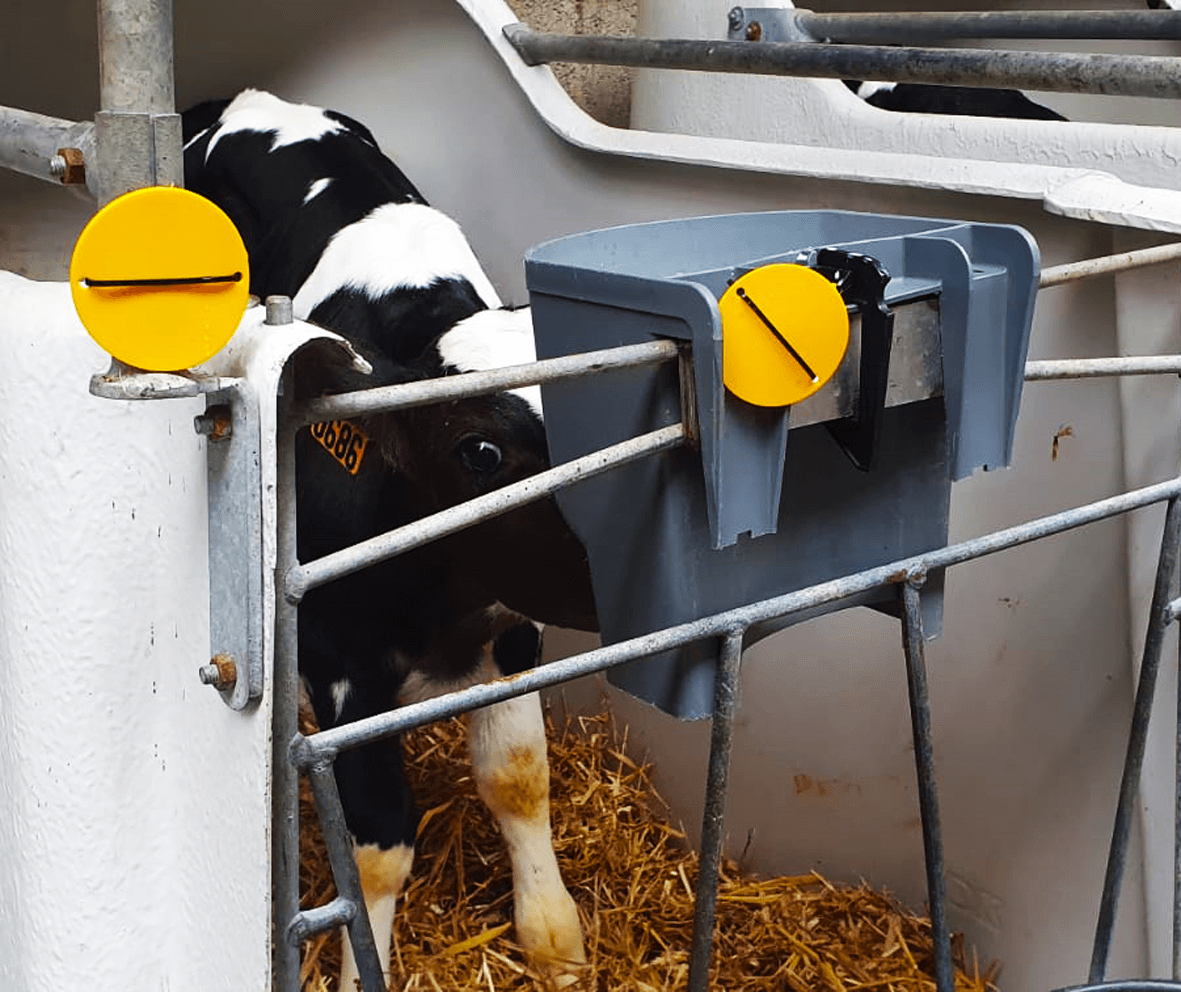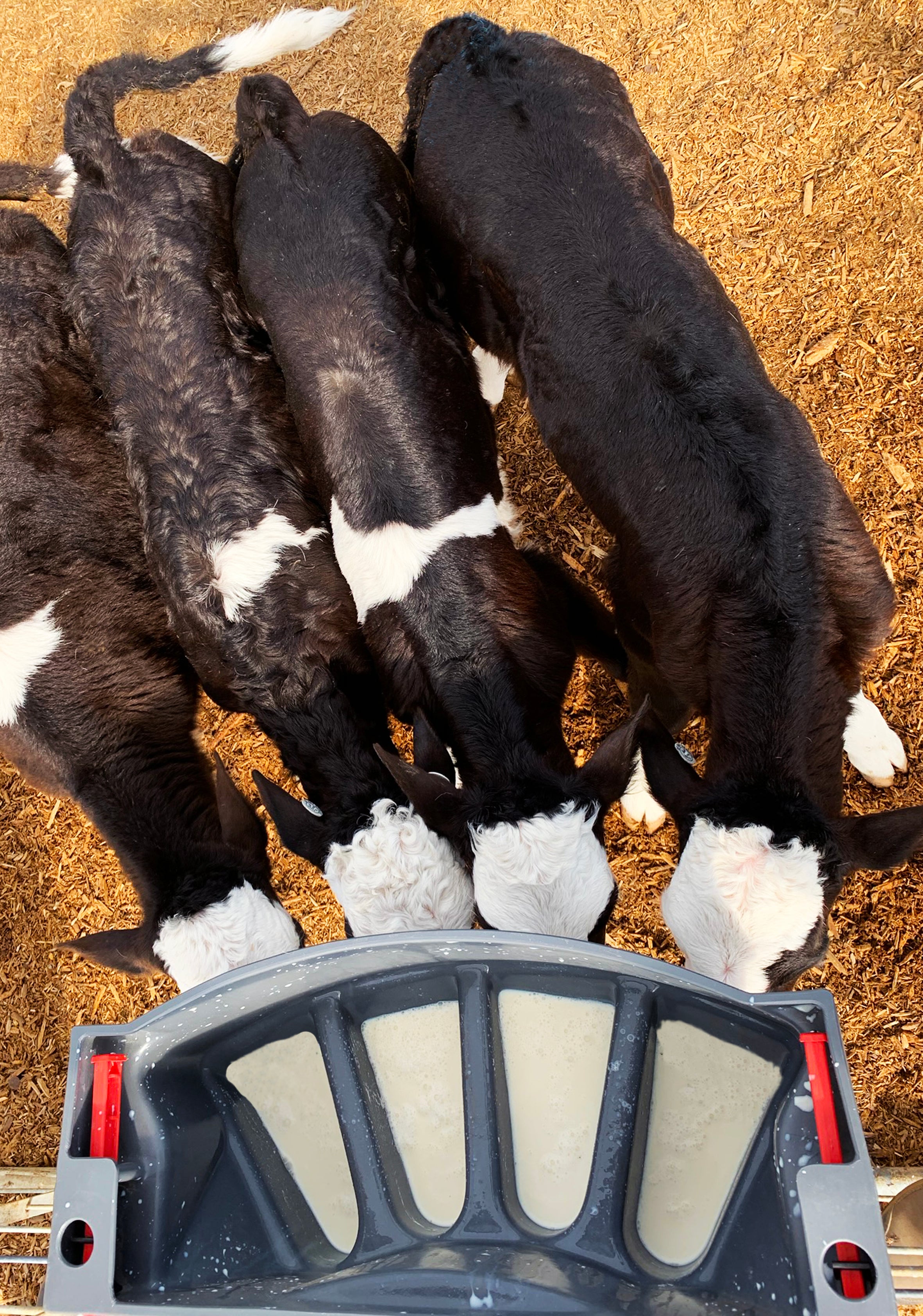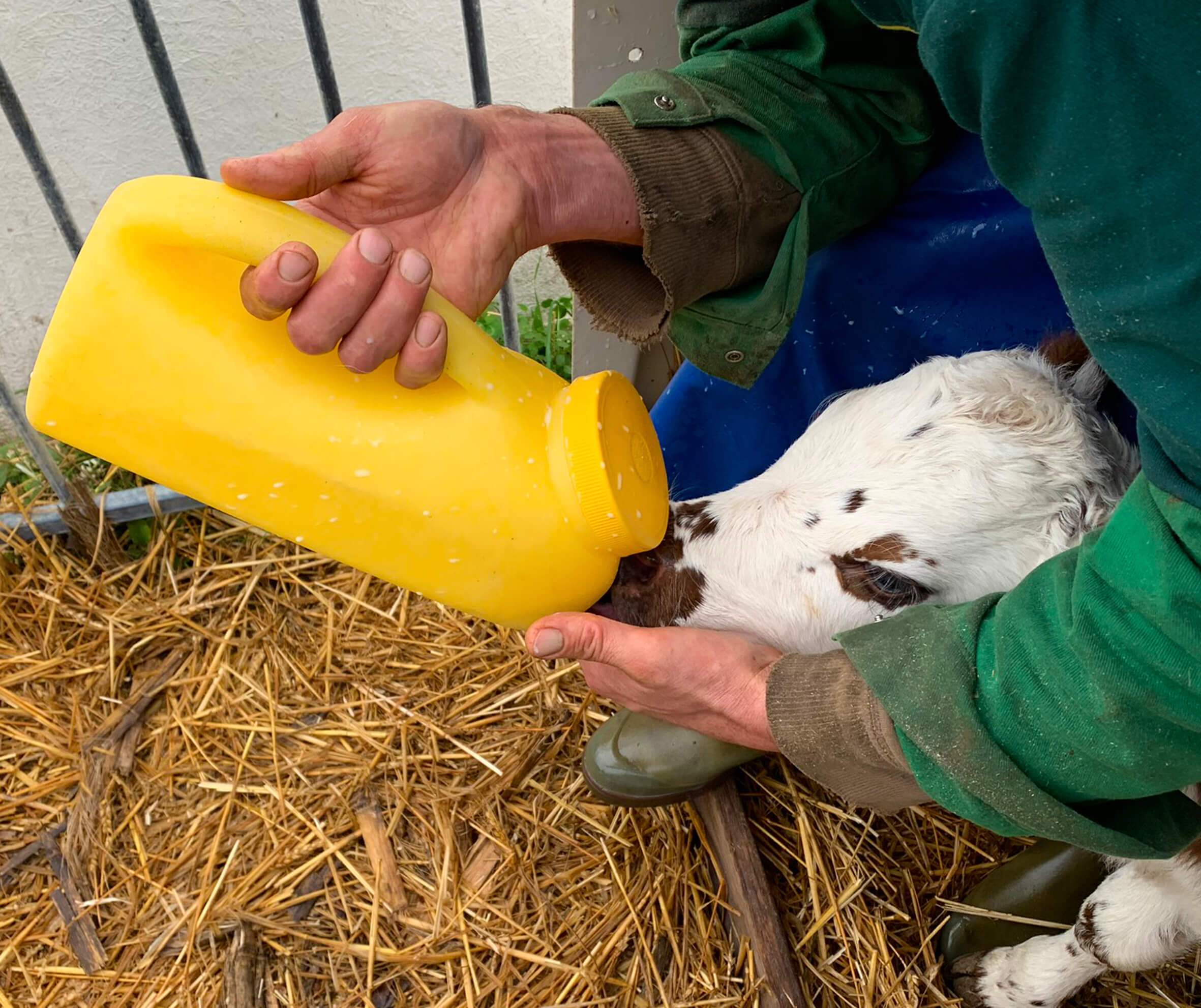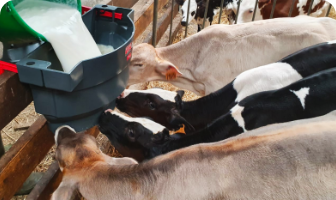
Group or Batch Rearing

We love to see calves in groups. They interact and zoom around and, in the winter, lie close together for warmth.
For farmers in New Zealand, Ireland and Australia, group feeding from Day 1 is normal.
In fact, we're pretty sure we've never seen an individual system in any of these countries!
Calves are born in the spring so there is a large volume of calves in a short time to make grouping of calves the same age an easy task.
There are many benefits to group feeding, most significantly the reduction of time, labour, and the improvements in calf behaviour. Cross suckling can be a barrier to group feeding, however there is a simple fix, slow the milk flow, regulate the intake and calves stop cross suckling!
A lot of study is being done around the benefits of group feeding.
A study at the University of British Columbia found that pair-housed calves continued to gain weight after weaning while individually housed calves experienced a lag in weight gain after weaning. Group or pair-housed calves also experience group learning. In a study performed at Utah State University, calves housed in groups learned to eat calf starter at an earlier age than calves housed individually. Consumption of calf starter promotes rumen development to increase feed efficiency.
-
Protocol
- At the start of the season or for each new batch of calves, put new Milk Bar™ Teats into your group feeders.
- At weaning, discard the worn teats and at the start of the new season or batch of calves, place new Milk Bar™ Teats so the next wave of calves starts with the right flow of milk.
-
Cleaning
Daily rinse and twice a week use an Alkali Detergent with a hot wash.
1
/
of
2
Small groups, or large groups, we've got a feeder to suit!
-
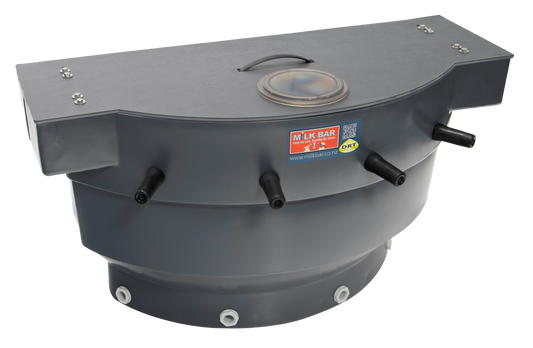 Sold out
Sold outMilk Bar™ Ad Lib 4
Regular price €0,00Regular priceUnit price / per -
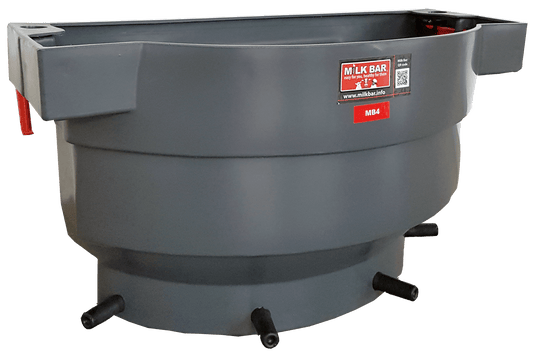 Sold out
Sold outMilk Bar™ XL 4
Regular price €0,00Regular priceUnit price / per -
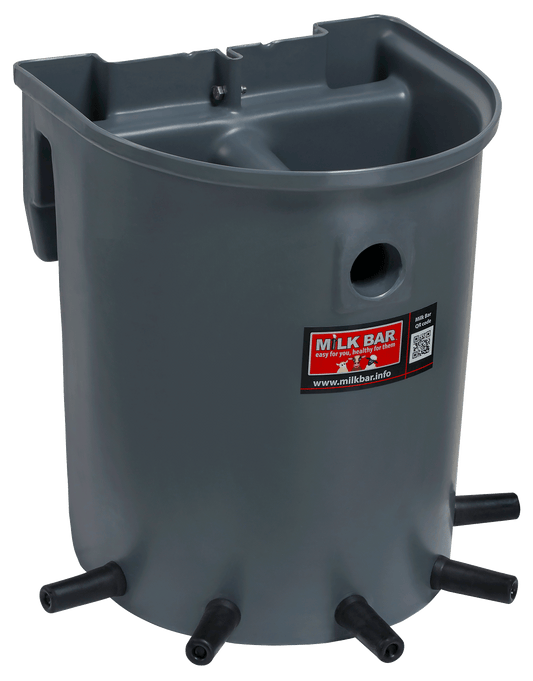 Sold out
Sold outMilk Bar™ 5
Regular price €0,00Regular priceUnit price / per -
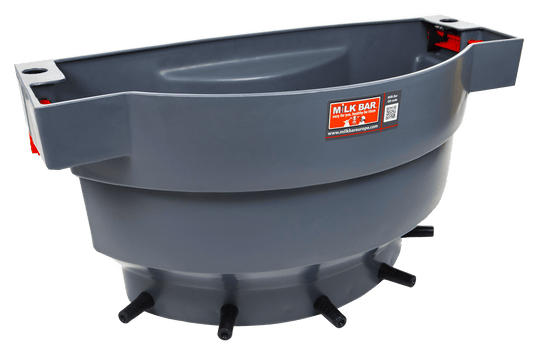 Sold out
Sold outMilk Bar™ 5EL
Regular price €0,00Regular priceUnit price / per
1
/
of
4
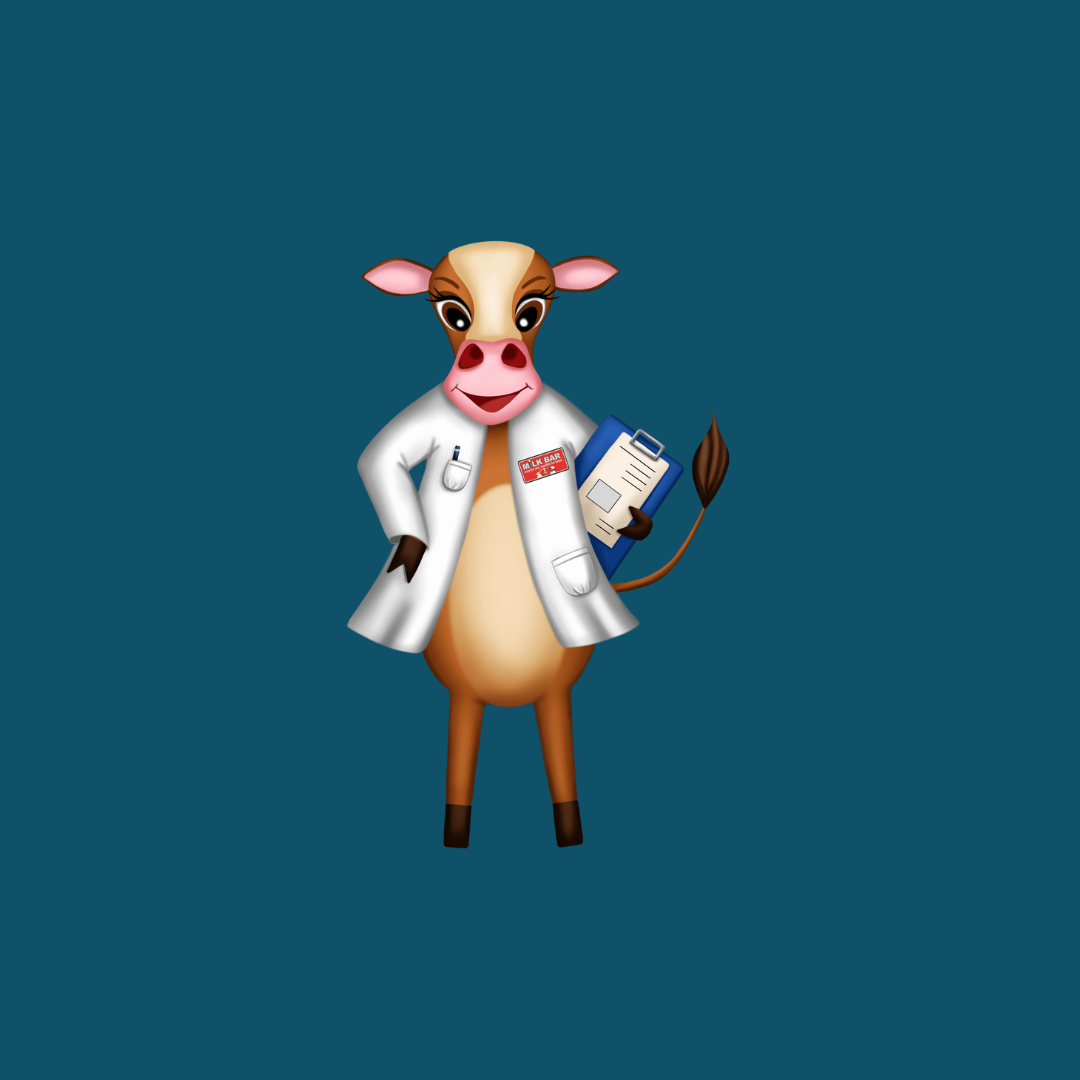
Research Tip!
Reduce cross suckling by controlling milk flow
Calves fed from a fast teat or a bucket will immediately suckle each other’s navels and udders post feeding making group feeding a challenge. The Milk Bar™ Teat resolves this issue so calves can be group fed with minimal risk.
‘During the trial, it was observed that group-housed calves fed the faster flow teats had a much greater incidence of hyperactivity immediately post feeding and were more likely to engage in non-nutritive sucking of each other’s body parts (including muzzle, navel and udder).’ Source - Journal of Applied Animal Nutrition
Using Milkbar





